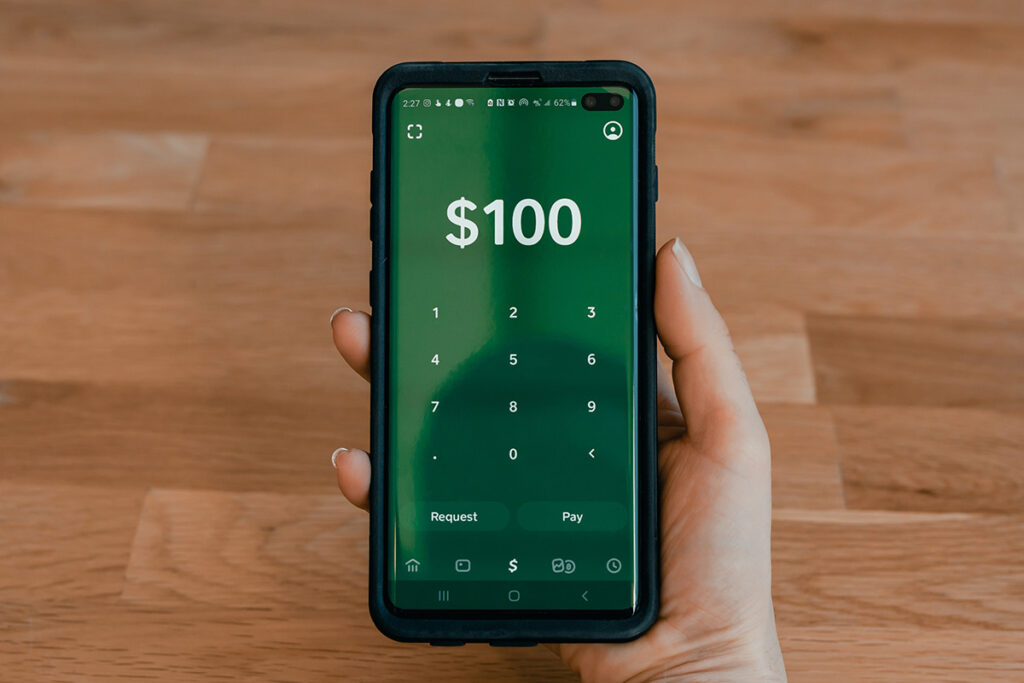
Over the past few years, cashless peer-to-peer payment applications (apps) have become very popular. It is estimated that 69.2 million Americans used a peer-to-peer payment app in 2019, and this number is expected to rise to 73.8 million users this year1. It is not hard to see why: These apps are easy, fast, and convenient. In this post, we’ll review what cashless payment apps are, the pros and cons of using them, and how best to protect your security and privacy if you do.
So, What Are Cashless Payment Apps, and How Do They Work?
Cashless peer-to-peer (P2P) payment apps generally work as follows: You download the application on your phone, set up a user profile, and connect it to your bank account or other payment vehicle, such as a debit or credit card. From there, you can send and receive money to and from others through the app. Money in will go directly into the connected bank account or stay in the app until you request a transfer to your account.
The most commonly used apps are Apple Pay, Venmo (40 million active users in the U.S.2), Cash App (over 15 million monthly active customers in the U.S. and U.K.3), and Zelle. Many people use more than one app.
The Benefits
The benefits of using cashless payment apps are expansive. You can use them to take care of a bill or to pay a person. Say, you’re out to dinner with friends. You need to split the bill but did not bring enough cash. You can use a cashless payment app to immediately send money to a friend to cover your portion. The apps are designed to be used with ease and without fuss.
Cashless P2P payment apps also have a degree of security. According to a Consumer Reports study of the most popular services4, payments made on Apple Pay, Venmo, Cash App, Facebook Messenger, and Zelle are generally safe. However, there are some security warnings.
The Warnings
While simplicity and ease of use may be the two biggest selling points of cashless payment apps, these features are also related to two of the biggest problems with them: the ease with which you can accidentally send money to the wrong person, and the difficulty of reversing such payments. In fact, many cashless payment app providers will not help to return your funds if the unintended recipient does not comply.
Another problem is fraud. Some thieves exploit the trust that many users have in P2P services and trick users into sending them money. If you do end up sending money to a scammer, the law does not require the app service to recover or return the funds.
While many of the cashless payment apps do have additional security settings, most do not ask you to set them up before you start using them. Venmo, Cash App, and Facebook Messenger payments do not require a PIN, a password, or a fingerprint under their default security settings. However, the most secure app according to Consumer Reports, Apple Pay, requires users to confirm every payment before it is sent.
A final concern with cashless payment apps is privacy. In their study, Consumer Reports found that the most popular apps reserve broad rights to use your information for unrelated purposes, such as targeted advertising and selling your data to third parties. Venmo, an app so popular it is now a verb—“Just Venmo me later”—sets up all transactions as public by default. Which means that unless you change your settings, your entire friend community can see who you are paying and why. ApplePay has positive privacy practices and is currently the only app that strictly limits the data it collects from users.
Best Practices for Using Cashless Payment Apps
If you use cashless payment apps or plan to, we suggest you follow these guidelines:
- Only send money to people you know—Most cashless P2P payment apps do not offer the same purchase protection as PayPal (including Venmo, even though it is owned by PayPal). Therefore, if you are selling an item to a stranger online, opt for PayPal to complete the transaction, or another payment service that offers scam protection.
- Double (and triple) check that you’re sending money to the right person—A minor typo in a name or phone number could result in an instant and likely irreversible payment to a complete stranger.
- Strengthen your security settings as much as possible—Set up a PIN to unlock your account and multifactor authentication, if possible. Use a long, unique password and change it regularly.
- Become familiar with the resolution process ahead of time—Research the customer service contract and any procedures in place for dispute resolution, so that you know what to do if something goes wrong.
- Keep your app up to date—Hackers can exploit vulnerabilities in prior versions of software. So update your app frequently or turn on automatic updates so you always have the latest security protections.
- Open an “apps-only” bank account—Consider setting up or designating an account that’s just for cashless transactions. Keep a small balance in there, and keep it unlinked from any other bank or brokerage account.
Footnotes
- https://www.emarketer.com/content/strong-growth-from-venmo-and-zelle-drives-p2p-transaction-volume
- https://www.wsj.com/articles/need-to-pay-the-babysitter-dont-even-think-about-using-cash-11575369020
- https://www.wsj.com/articles/need-to-pay-the-babysitter-dont-even-think-about-using-cash-11575369020
- https://www.consumerreports.org/digital-payments/mobile-p2p-payment-services-review/
Sources
CR Report: https://www.consumerreports.org/digital-payments/mobile-p2p-payment-services-review/
Privacy Warnings: https://www.consumerreports.org/digital-payments/peer-to-peer-payments-are-generally-safe-but-consumers-must-be-aware-of-risks/
Best Practices: https://www.consumerreports.org/scams-fraud/how-to-protect-yourself-from-p2p-payment-scams/





